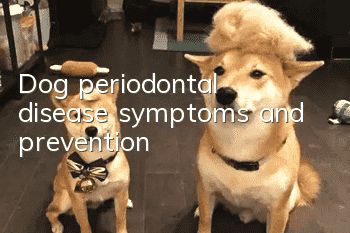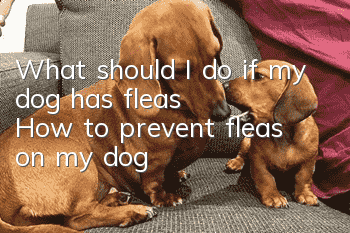Dog periodontal disease symptoms and prevention

Dog periodontitis refers to acute and chronic inflammation of the tissues and supporting tissues around the teeth, also known as periodontal disease and alveolar pyorrhea. Clinically, it is often characterized by halitosis, salivation, loose teeth, and gum recession. It is more common in older dogs. Sick dogs salivate profusely, with rancid saliva that is often mixed with blood; their mouths are sensitive, they must be careful when eating, chew slowly, and often spit out food suddenly. So what are the symptoms of periodontitis in dogs and how to treat it?
French Wolfdog
Symptoms of periodontitis
Sick dogs salivate profusely, with rancid saliva that is often mixed with blood; their mouths are sensitive, they must be careful when eating, chew slowly, and often spit out food suddenly, especially when eating hard foods such as bones and fish bones. Over time, the pain may lessen. Oral examination shows that the diseased teeth are loose, and there is often a small amount of pus in the periodontal period. When the gums are squeezed, thick juice or blood can flow out. The mouth and exhaled air have a rancid smell.
Prevention and treatment of periodontitis
First, clean the mouth and affected teeth with normal saline or 2% to 3% boric acid water. If there are ulcers, corrode them with 5% silver borate solution and then clean them. Then apply iodine tincture or erythromycin ointment to the affected area. If the gums have become enlarged, excess tissue can be removed by local anesthesia or electrocautery.
After general anesthesia, the diseased tooth and the surrounding tartar are scraped. If the teeth are obviously loose, they should be extracted. Postoperative care should be strengthened and antibiotics should be used throughout the body to prevent infection. Rinse the mouth regularly with salt water and provide soft, easily digestible food to facilitate recovery. Pay attention to oral hygiene at ordinary times, and use rubber toys for pets to chew on to improve the disease resistance of teeth.
- When is the best time to train a Border Collie? The best time to train a Border Collie!
- How to train a two-month-old Teddy to sit down? Teddy training method!
- What causes a dog’s nose to be dry? A must-read for beginners!
- What to do if a dog bites and attacks someone
- What should you pay attention to when dogs sleep with people?
- Is it okay to feed adult dogs once a day?
- These four types of dogs have fierce temperaments and are not suitable for novices to raise.
- If your dog doesn’t sleep in the kennel, how should you train your dog to get used to sleeping in the kennel?
- Is it better if Labrador is neutered?
- Is it enough for a dog to hit the quadruple?



